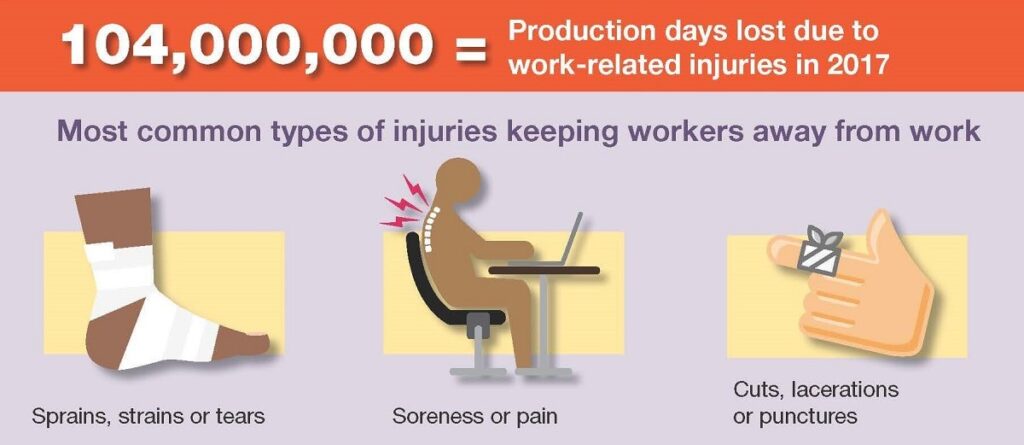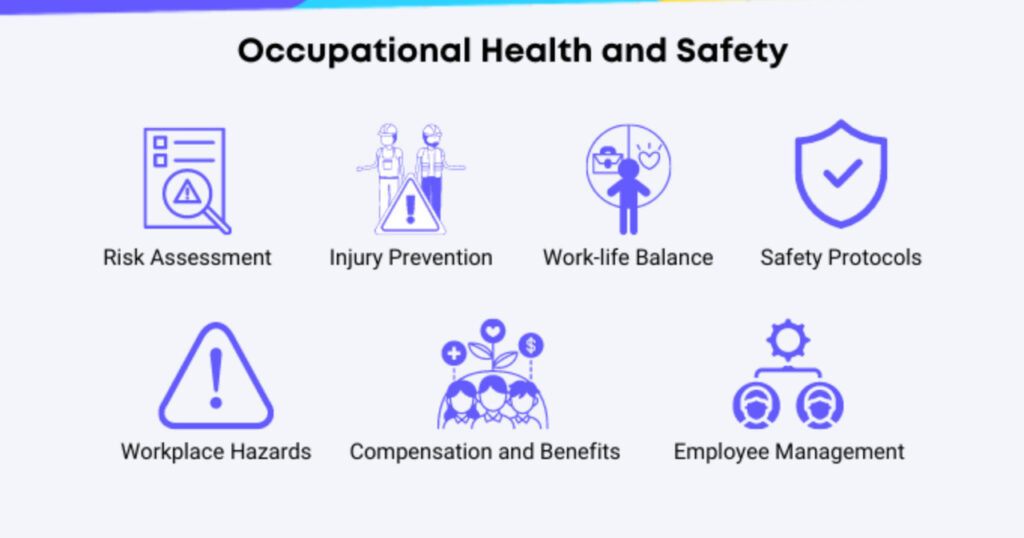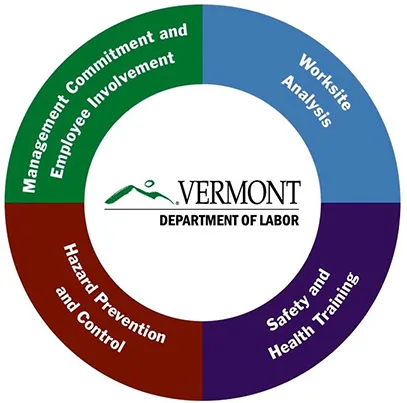In the early days of the Industrial Revolution, safety regulations were nearly non-existent. Factory floors were often overcrowded and poorly lit, with dangerous machinery operating at high speeds. Workers toiled long hours in these conditions, with injuries and fatalities an all-too-common occurrence. The Triangle Shirtwaist Factory fire of 1911, which claimed the lives of 146 workers, serves as a prime but grim example of the times. Locked exits, inadequate fire escapes, and hazardous working conditions ignited a disaster that fuelled widespread labor reforms and the modern occupational safety movement.
And while significant progress has indeed been made since, we still face many safety issues in the workplace today.
This then begs questions such as: What are the contemporary safety problems in the workplace? What are the repercussions of overlooking safety protocols, and how can we strive for safer workplaces despite the obstacles?
In this blog, we will address these questions and many others, examining the diverse range of workplace safety issues, exploring the root causes of accidents and injuries, and providing practical strategies and key considerations for effective workplace injury prevention.
Safety Issues in the Workplace
Workplace safety issues manifest in diverse ways, affecting individuals, organizations, and industries differently. One key concern is fire safety in workplaces, which can vary depending on the environment, whether it’s an office environment, a construction site with concerns like construction heat safety, or a factory floor, every workplace presents its own set of safety challenges. The size and nature of an organization also influence the types and severity of safety issues that may arise.
While the specific safety issues in the workplace may vary, there are several common concerns that employers and workers frequently encounter:
1. Inadequate Hazard Identification and Risk Assessment
A comprehensive understanding of potential workplace safety challenges is the foundation of a safe workplace. Failing to identify and assess risks can lead to accidents, injuries, and illnesses. This is especially pronounced in workplaces where hazards are numerous and constantly changing.
2. Stress and Mental Health
The demands of modern work life, including heavy workloads, long hours, and the pressure to meet deadlines, can lead to chronic stress. This, in turn, can contribute to various mental health conditions, such as anxiety, depression, and burnout. Moreover, these conditions can affect not only individual well-being but also workplace safety, potentially leading to decreased focus, impaired decision-making, and an increased risk of accidents.
3. Physical Hazards
These hazards include a wide range of factors, including unsafe equipment or machinery, poor ergonomics, inadequate lighting, noise, and exposure to harmful substances. These hazards can lead to injuries, illnesses, and even fatalities.
4. Slips, Trips, and Falls
Falls are a leading cause of workplace accidents, accounting for a significant number of injuries and fatalities each year. Slips, trips and falls can occur due to wet or slippery floors, uneven surfaces, clutter, and inadequate fall protection measures.
5. Insufficient Safety Training and Awareness
Even with well-defined policies and procedures, workers may lack the knowledge and skills necessary to safely navigate their work environment. Inadequate training or failure to regularly update training can contribute to accidents and injuries.
6. Deficiencies in Safety Policies and Procedures
Clearly defined safety policies and procedures provide a framework for managing risks and ensuring safe work practices. Insufficiently detailed or missing policies and procedures can leave workers unsure of how to safely perform their duties, increasing the likelihood of accidents.
7. Poor Communication and Supervision
Ineffective communication between management and employees, as well as insufficient supervision, can hinder the identification and resolution of safety issues. A lack of clear communication channels can lead to misunderstandings, delays in addressing concerns, and ultimately, an increased risk of accidents.

Consequences of Mismanaging Workplace Safety Issues
The repercussions of neglecting workplace safety are not confined to the immediate aftermath of an incident. They extend across multiple domains, affecting the physical and mental well-being of workers, the financial stability of organizations, and the broader societal fabric.
The Physical and Psychological Tolls
The most immediate and devastating consequences are often borne by the workers themselves. Physical injuries, ranging from minor cuts and bruises to life-altering disabilities or even fatalities, can result from unsafe working conditions. However, the impact extends beyond the physical. The psychological trauma of accidents, witnessing colleagues’ injuries, or working in a perpetually unsafe environment can lead to anxiety, depression, post-traumatic stress disorder, and other mental health issues. These invisible wounds can be just as debilitating as physical injuries, affecting a worker’s quality of life and ability to return to work.
Financial Implications
Mismanaged workplace safety is a significant financial drain on organizations. Direct costs include medical expenses, workers’ compensation claims, and potential legal fees resulting from lawsuits or regulatory fines. Indirect costs, often overlooked but equally substantial, encompass lost productivity due to absenteeism and reduced work capacity, increased insurance premiums, and the expenses associated with hiring and training replacement workers. The ripple effect of these financial burdens can extend to decreased profitability, strained relationships with stakeholders, and, in severe cases, even bankruptcy.
Legal and Regulatory Ramifications
Workplace safety is not merely a matter of ethics or goodwill; it is a legal obligation. Numerous regulations and standards exist to safeguard worker well-being, and non-compliance can lead to severe legal and regulatory consequences. These can range from citations and fines imposed by regulatory bodies to civil lawsuits and even criminal charges in cases of gross negligence. Repeated violations can result in increased scrutiny, mandatory training programs, and restrictions on business operations. The legal landscape surrounding workplace safety is complex and varies across jurisdictions, underscoring the importance of understanding and adhering to the relevant regulations.
Reputational Damage
In an era of heightened corporate social responsibility and transparency, a company’s reputation is an asset. A poor safety record can quickly tarnish this image, leading to negative publicity, a loss of consumer trust, and difficulty attracting and retaining top talent. News of workplace accidents and injuries can spread rapidly through social media and other channels, further amplifying the reputational damage. For businesses operating in the global marketplace, a tarnished reputation in one region can have far-reaching consequences, affecting their ability to secure contracts, form partnerships, and expand into new markets.

Challenges in Maintaining Workplace Safety
Achieving and maintaining workplace safety is a continuous and demanding endeavor. It requires a concerted effort from all parties involved, including employers, employees, and safety professionals, to overcome a multitude of challenges that arise along the way.
Awareness and Safety Training
A fundamental challenge in workplace safety is ensuring that all individuals have a clear understanding of potential hazards and the appropriate safety protocols. This involves not only initial safety training but also ongoing education to keep pace with evolving regulations, technologies, and industry-specific risks. Effectively disseminating information, tailoring training to different roles and skill levels, and ensuring that employees retain and apply the knowledge gained can be a complex undertaking.
Communication and Safety Culture
Creating a culture of safety goes beyond mere compliance with regulations. It involves cultivating a shared belief in the importance of safety and empowering employees to speak up about hazards or unsafe practices. Building this culture requires open communication channels, active listening, and a commitment from leadership to prioritize safety. However, establishing and maintaining a strong safety culture can be challenging, particularly in large organizations or those with diverse workforces.
Compliance with Safety Regulations
The legal and regulatory landscape surrounding workplace safety is vast and constantly evolving. Staying abreast of the latest regulations, interpreting their applicability to specific workplaces, and implementing appropriate measures can be a significant challenge, especially for small businesses with limited resources. However, both employees and employers will benefit immensely from complying with workplace safety regulations on many levels.
Risk Assessments
Identifying safety hazards in the workplace is a critical aspect of any safety management system. However, risk assessment can be a complex process, requiring in-depth knowledge of industry-specific risks, regulatory requirements, and the specific characteristics of the workplace. As Mike Russo from JobSiteCare succinctly states, “Managing workplace safety is a continuous challenge, encompassing the need to address various safety and risk processes within an organization. It requires a proactive, adaptable, and collaborative approach to create an environment where safety is seamlessly integrated into the daily workflow.”

How to Identify and Respond to Safety Issues in the Workplace
A comprehensive workplace injury prevention strategy is built on several interconnected pillars. In short, this is how to deal with safety issues in the workplace:
Step #1: Perform Regular Safety Risk Assessments
Conducting regular risk assessments allows for the identification of potential hazards before they result in incidents. This involves evaluating work processes, equipment, and the environment to identify areas where improvements can be made. Utilizing data-driven tools like JobSiteCare’s job site injury record-keeping and analytics solution can provide valuable insights into incident trends, allowing for targeted interventions and continuous improvement of safety protocols.
Step #2: Establish a Safety Training Program
A well-structured safety training program, ideally led by experienced health and wellness professionals familiar with OSHA regulations, provides employees with the knowledge to recognize potential hazards in their specific work environment. JobSiteCare’s expertise in this area ensures that training is both effective and aligned with best practices.
Step #3: Implement a Robust and Clear Incident Response Procedure
Having a clearly defined injury response procedure in place streamlines the process, ensuring immediate care for the injured employee and minimizing further harm. Such a procedure typically outlines initial steps like administering first aid in the workplace, contacting emergency services when needed, and documenting the incident. If the regular occupational health clinics aren’t cutting it for you, adopting onsite healthcare can make a substantial difference for your overall bottom-line.
JobSiteCare’s telemedicine-led solutions facilitate a rapid and expert response, ensuring that injured workers receive timely and appropriate care.
Step #4: Cultivate a Safety-Conscious Culture
A “whole worker care” approach that emphasizes mental health, well-being, and open communication creates an environment where safety concerns are readily identified and addressed. By encouraging dialogue and providing resources for mental and physical health, a culture of safety becomes ingrained in the workplace.

Conclusion
Workplace safety is a living, breathing aspect of your business. It’s not just about preventing the negative, but fostering the positive – a workforce that’s engaged, productive, and empowered.
JobSiteCare deeply understands this, and that’s why we offer tailored workplace injury solutions that combine cutting-edge technology with personalized support. With us, you’re not just getting a service, you’re gaining a workplace injury management partner dedicated to helping you build a safer, healthier, and more successful workplace. Contact us today, and let’s discuss how we can make a positive impact on your business.
Frequently Asked Questions
What are the main types of safety hazards in the workplace?
Workplace safety hazards can be classified into several categories, including physical hazards (e.g., slippery floors, falling objects), chemical hazards (e.g., exposure to toxins), biological hazards (e.g., bacteria, viruses), ergonomic hazards (e.g., repetitive strain injuries), and psychosocial hazards (e.g., workplace stress).
How to report workplace safety issues?
Workplace safety issues should be reported to a supervisor or manager, or to a designated safety representative or committee. In some cases, it may be necessary to report the issue to a government agency, such as the Occupational Safety and Health Administration (OSHA).
How to design a training program for workplace safety issues?
Developing a training program for workplace safety involves a methodical process. This includes identifying specific safety hazards in the workplace, aligning the training content with the workforce’s requirements, using a variety of instructional techniques, and regularly assessing the program’s efficacy to ensure its continued relevance and effectiveness.
What are the legal implications of safety issues in the workplace?
Safety violations can lead to legal consequences such as fines, penalties, lawsuits, and even criminal charges in severe cases.
How can psychological factors exacerbate workplace safety issues?
Psychological factors, such as stress, fatigue, and anxiety, can significantly affect workplace safety. These factors can hinder decision-making, reduce focus, and increase the probability of mistakes or accidents.


